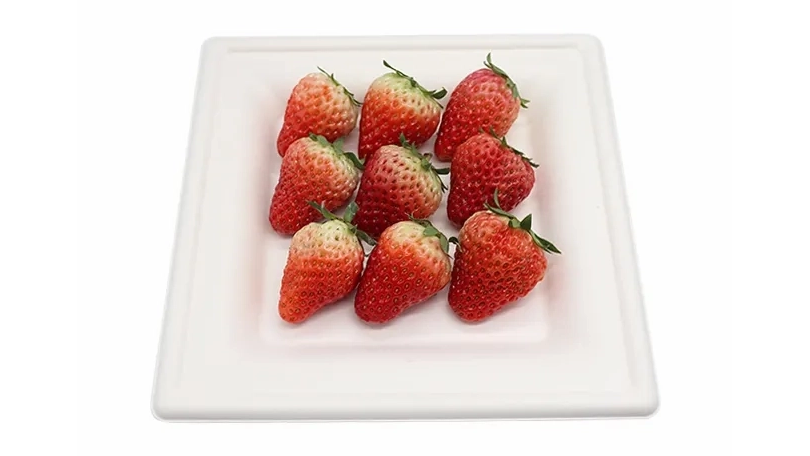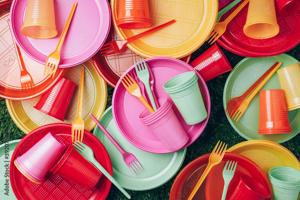
Content Menu
● Understanding Disposable Plastic Plates
>> Types of Disposable Plastic Plates
● The Recycling Process
>> 1. Collection
>> 2. Sorting
>> 3. Cleaning
>> 4. Shredding
>> 5. Melting and Extruding
● Common Misconceptions About Recycling Plastic Plates
>> Myth 1: All Disposable Plastic Plates Are Non-Recyclable
>> Myth 2: Recycling Is Not Economically Viable
>> Myth 3: Recycling Is Not Environmentally Friendly
● The Future of Recycling Disposable Plastic Plates
>> Advances in Technology
>> Government Regulations and Policies
● Alternatives to Disposable Plastic Plates
>> Compostable Plates
>> Reusable Plates
● Consumer Responsibility in Recycling
● Conclusion
● FAQs About Recycling Disposable Plastic Plates
>> 1. Can all types of disposable plastic plates be recycled?
>> 2. What happens if I put non-recyclable plates in the recycling bin?
>> 3. How can I tell if my disposable plastic plate is recyclable?
>> 4. Are there any environmental benefits to recycling disposable plastic plates?
>> 5. What should I do with my disposable plastic plates if they can't be recycled?
● Citations:
The increasing concern over plastic waste has prompted many to question the recyclability of disposable plastic plates. As society strives for sustainability, understanding the recycling process and the types of plastics that can be recycled is crucial. This article will explore whether disposable plastic plates can be recycled, the recycling process, common misconceptions, and the future of plastic recycling.
Understanding Disposable Plastic Plates
Disposable plastic plates are widely used in various settings, from parties to picnics. They are typically made from materials like polypropylene (PP) and polystyrene (PS), which are common plastics in disposable tableware. However, not all disposable plates are created equal when it comes to recycling.
Types of Disposable Plastic Plates
1. Polypropylene (PP): Often used for its durability and heat resistance, PP is recyclable. This type of plastic is commonly found in containers, straws, and some types of disposable cutlery.
2. Polystyrene (PS): Commonly found in foam plates, PS can be recycled but is often not accepted in curbside programs due to contamination issues. Many recycling facilities do not accept PS because it is difficult to process and often ends up in landfills.
3. Bioplastics: Some plates are made from plant-based materials and may not be recyclable in traditional systems. While they are marketed as eco-friendly alternatives, they often require specific conditions to break down effectively, making them unsuitable for standard recycling processes.
The Recycling Process
Recycling disposable plastic plates involves several steps to ensure that they can be effectively transformed into new products.
1. Collection
The first step involves collecting used plastic plates from households, businesses, and events. Proper sorting at this stage is essential to separate recyclable plastics from non-recyclables. Many communities have designated recycling bins where residents can drop off their used plastics.
2. Sorting
At recycling facilities, plastics are sorted by type and color. This process is critical because mixing different types of plastics can compromise the quality of the recycled material. Advanced sorting technologies, such as infrared sensors and automated systems, help streamline this process, ensuring that only suitable plastics proceed to the next stage.
3. Cleaning
Once sorted, the plates undergo a washing process to remove food residues and contaminants. This step is vital for ensuring that the recycled material is clean enough for reprocessing. Contaminants like grease or food particles can lead to lower-quality recycled products or even spoil entire batches.
4. Shredding
The cleaned plates are then shredded into smaller pieces, making them easier to melt and reform into new products. Shredding increases the surface area of the plastic, allowing for more efficient melting during the next stage.
5. Melting and Extruding
Shredded plastic is heated until it melts and then extruded into pellets. These pellets serve as raw materials for manufacturing new plastic products. The extrusion process allows manufacturers to create a variety of shapes and sizes from recycled plastic.

Common Misconceptions About Recycling Plastic Plates
Despite the recyclability of some disposable plastic plates, several misconceptions persist:
Myth 1: All Disposable Plastic Plates Are Non-Recyclable
Many people believe that all disposable plastic plates cannot be recycled. However, as mentioned earlier, those made from PP are recyclable if disposed of correctly. It's important for consumers to check local guidelines regarding what types of plastics are accepted in their area.
Myth 2: Recycling Is Not Economically Viable
While recycling can sometimes be more expensive than producing new plastics, the long-term benefits—such as reduced landfill waste and conservation of resources—outweigh these costs. Many companies are investing in sustainable practices because consumers increasingly demand environmentally friendly products.
Myth 3: Recycling Is Not Environmentally Friendly
Some argue that recycling requires significant energy and resources. However, the environmental impact of recycling is generally lower than creating new products from virgin materials. In fact, recycling helps reduce greenhouse gas emissions compared to manufacturing with raw materials.

The Future of Recycling Disposable Plastic Plates
As technology advances, so too does the potential for improving recycling processes for disposable plastic plates.
Advances in Technology
Innovations such as chemical recycling could allow for more efficient breakdown of plastics into their basic components, making it easier to create new products from recycled materials. Chemical recycling processes can handle mixed plastics that traditional mechanical recycling cannot manage effectively.
Government Regulations and Policies
Stricter regulations may encourage manufacturers to produce more recyclable products and improve recycling infrastructure. Incentives for consumers to recycle correctly could also enhance participation rates in recycling programs. Many governments are implementing policies aimed at reducing single-use plastics altogether while promoting alternatives that are easier to recycle or compost.
Alternatives to Disposable Plastic Plates
Given the challenges associated with recycling disposable plastic plates, many people are seeking alternatives that offer both convenience and sustainability.
Compostable Plates
Compostable plates made from materials like sugarcane bagasse or palm leaves provide an eco-friendly option for events and gatherings. These plates break down naturally in composting environments without leaving harmful residues behind.
Compostable Plates
*Image: Compostable plates made from sugarcane bagasse.*
Reusable Plates
Investing in reusable plates made from durable materials such as stainless steel or ceramic can significantly reduce waste generated by single-use items. While they require more upfront investment and cleaning effort, reusable options provide long-term savings and environmental benefits.
Reusable Plates
*Image: Stylish reusable plates made from ceramic.*
Consumer Responsibility in Recycling
Consumers play a crucial role in ensuring that disposable plastic plates are recycled properly. Here are some actionable steps individuals can take:
1. Educate Yourself: Familiarize yourself with local recycling guidelines regarding what types of plastics are accepted.
2. Clean Before Recycling: Rinse off food residues before placing items in the recycling bin to prevent contamination.
3. Choose Wisely: Opt for products made from recyclable materials when possible.
4. Support Sustainable Brands: Purchase from companies committed to using sustainable packaging practices.
5. Advocate for Change: Support policies aimed at reducing plastic waste and improving recycling infrastructure in your community.
Conclusion
In summary, disposable plastic plates can be recycled under certain conditions. Understanding the types of plastics involved and following proper disposal methods can significantly impact their recyclability. As technology improves and public awareness grows, the future of recycling disposable plastic plates looks promising.
FAQs About Recycling Disposable Plastic Plates
1. Can all types of disposable plastic plates be recycled?
No, only those made from certain plastics like polypropylene (PP) are typically recyclable.
2. What happens if I put non-recyclable plates in the recycling bin?
Non-recyclable items can contaminate recyclable materials, making them unsuitable for processing.
3. How can I tell if my disposable plastic plate is recyclable?
Look for a recycling symbol on the plate; if it has a number 5 inside it, it's likely recyclable.
4. Are there any environmental benefits to recycling disposable plastic plates?
Yes, recycling reduces landfill waste and conserves natural resources needed to produce new plastics.
5. What should I do with my disposable plastic plates if they can't be recycled?
If they aren't recyclable, dispose of them in your regular trash or consider alternatives like compostable tableware.
Citations:
[1] https://smartyhadaparty.com/blogs/home/are-disposable-plastic-plates-really-recyclable
[2] https://www.bpf.co.uk/plastipedia/sustainability/how-is-plastic-recycled-a-step-by-step-guide-to-recycling.aspx
[3] https://create.vista.com/photos/plastic-for-recycling/
[4] https://blog.wordvice.cn/title-capitalization-rules-for-research-papers/
[5] https://www.epd.gov.hk/epd/sites/default/files/epd/english/environmentinhk/waste/pub_consult/files/tableware-leaflet-en.pdf
[6] https://www.bausano.com/en/press-and-news/guide-to-the-plastic-recycling-and-recovery-process
[7] https://www.gettyimages.ae/photos/recycling-process
[8] https://www.treehugger.com/can-plastic-forks-and-plates-be-recycled-4864005
[9] https://www.secondlife.earth/learning-center/complete-plastics-recycling-process

















